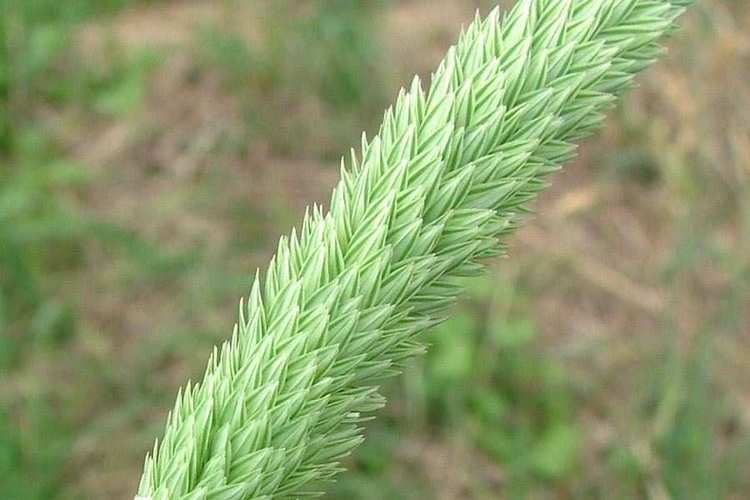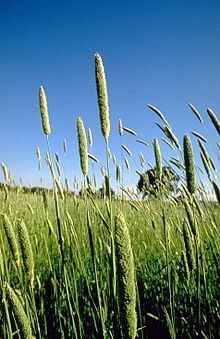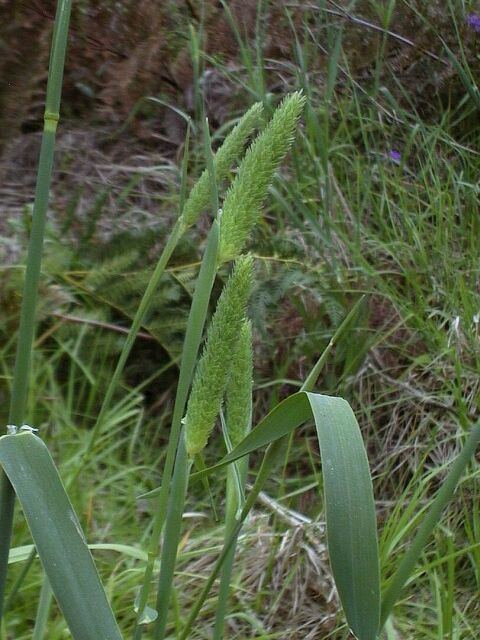Rank Species | Higher classification Phalaris | |
 | ||
Similar Phalaris, Grasses, Phalaris arundinacea, Phalaris brachystachys, Trifolium subterraneum | ||
Phalaris aquatica (syn. P. tuberosa) known by the common names bulbous canary-grass and Harding grass, is a species of grass in the genus Phalaris of the Poaceae Family.
Contents

Description

It is an erect, waist-high, stout perennial bunch grass with grayish to bluish green leaves. Flowering heads are dense, spike-like, and usually two to five inches long. It is slow to develop from seed, but can form large bunches after several years.

Phalaris arundinacea (reed canary grass) differs from Harding grass in having more distinct rhizomes and an inflorescence that is compact at first but later becomes more open as the branches spread.
Hybrids of Harding grass and reed canary grass have been produced. Varieties include 'AQ1', 'Uneta', and 'Australis'.
Toxicity

Some Phalaris species contain gramine, which can cause brain damage, other organ damage, central nervous system damage and death in sheep although Phalaris aquatica is said to be non-toxic.

Leaves and seedlings contain the tryptamine hallucinogens DMT, 5-MeO-DMT and related compounds. A raw, dried plant Phalaris aquatica contains approximately 0.1% DMT, 0.022% 5-MeO-DMT, and 0.005% bufotenin. A particular strain of P. aquatica from Italy, labeled 'AQ-1', was reported to contain in excess of 1.0% alkaloid concentration.
Invasive species

Harding grass is an invasive species in grassland, oak woodland, chaparral, and riparian habitats. Native grasses and grassland habitat in California are affected.
